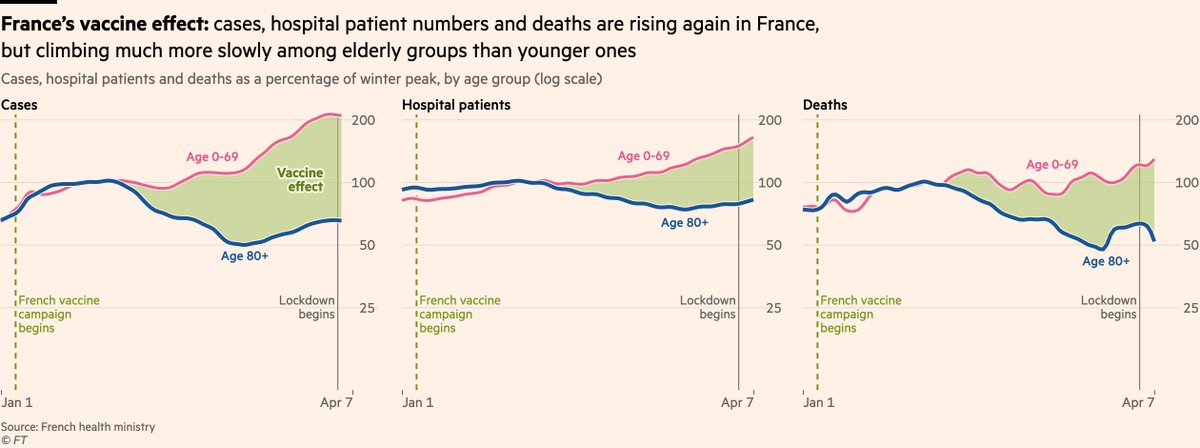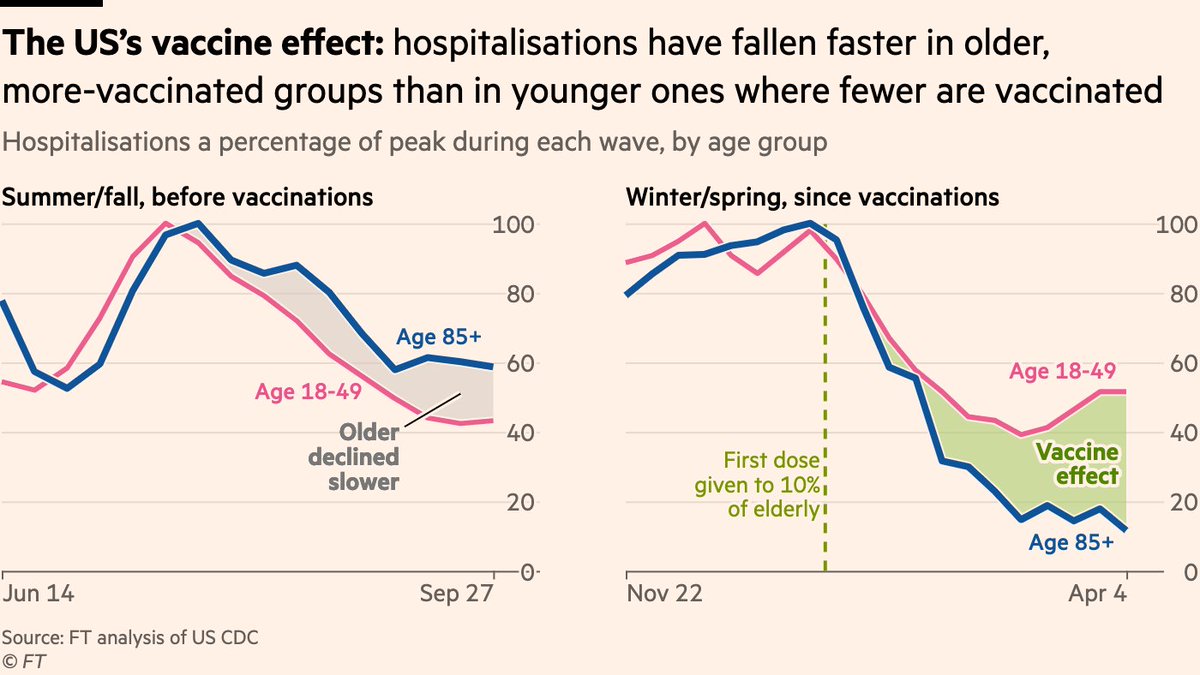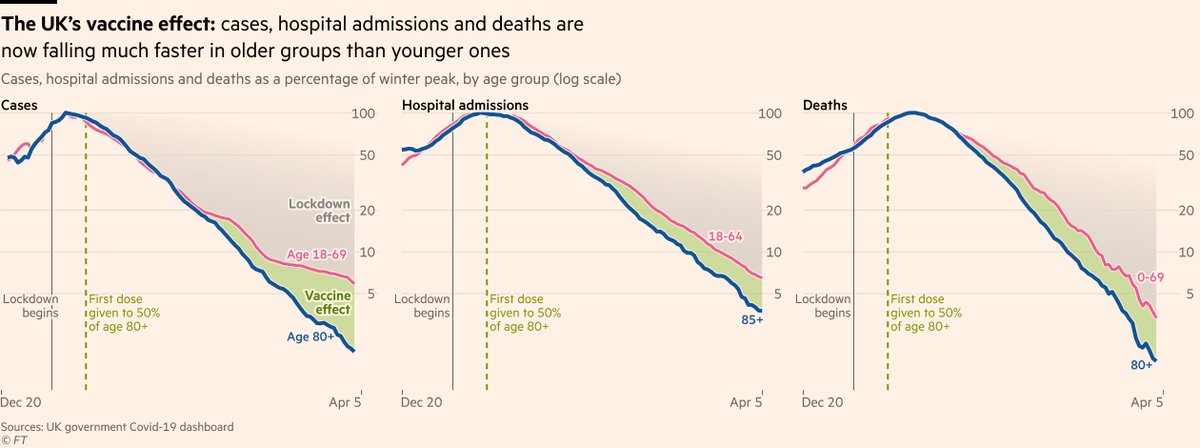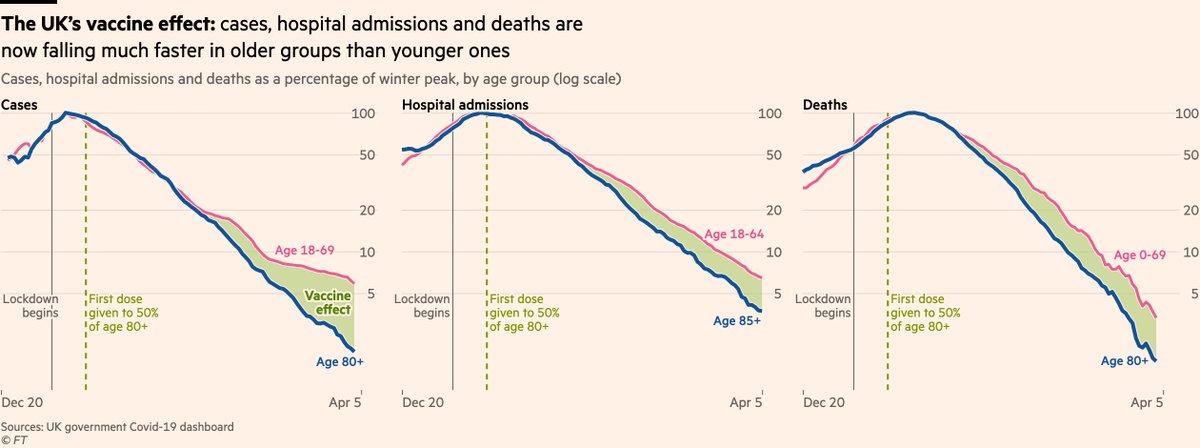
Surprised by pushback to Boris Johnson’s comments that restrictions have played a key role in reducing UK Covid rates.
Why do people think rates have fallen among unvaxxed groups?
I always felt "lockdown effect" was implicit in these charts, but here it is explicitly labelled
Why do people think rates have fallen among unvaxxed groups?
I always felt "lockdown effect" was implicit in these charts, but here it is explicitly labelled

Of course, it’s very difficult to know exactly how big the lockdown effect is for several reasons, but we can now see from dozens of other countries how B.1.1.7 sends rates rising without restrictions, even among the age groups who have been mostly vaccinated.
See France:
See France:

Same is now clear in the US, too:
With minimal restrictions in much of the US, hospitalisations have been rising again among under-50s as B.1.1.7 has taken hold.
Vaccines produce the gap between those lines, but without restrictions in place, the lines can bend back upwards.
With minimal restrictions in much of the US, hospitalisations have been rising again among under-50s as B.1.1.7 has taken hold.
Vaccines produce the gap between those lines, but without restrictions in place, the lines can bend back upwards.

And the impact of restrictions in the UK isn’t even new information. @ChrisGiles_ and I wrote about it two months ago when it was already clear lockdown was having an impact at least as large as vaccinations ft.com/content/6d4ff1…
None of this is to diminish the brilliance of vaccines, which remain absolutely ace. They’re already doing a fantastic job, and when they push us over the line to herd immunity that’s a total game-changer.
Once you lock in herd immunity, restrictions become a thing of the past.
Once you lock in herd immunity, restrictions become a thing of the past.
But we’re not there yet, and we were absolutely nowhere near there when UK rates began falling in January, which is why it’s so clear that it was restrictions that first sent rates downwards, with vaccines then joining the party and accelerating that decline.
Back to this chart, reasons the size and shape of the "lockdown effect" is unclear include:
• Vaccines reduce transmission (
• Naturally acquired immunity is also a help on the way down
• Vaccines reduce transmission (
https://twitter.com/MonicaGandhi9/status/1381412299701805057). This means they can reduce rates among the unvaccinated
• Naturally acquired immunity is also a help on the way down

But it really shouldn’t need saying that with a highly infectious virus spreading through the population (as it was in UK around Christmas), curtailing our mixing with others indoors has had a huge impact on reducing case rates, above and beyond the boost provided by vaccines.
• • •
Missing some Tweet in this thread? You can try to
force a refresh









